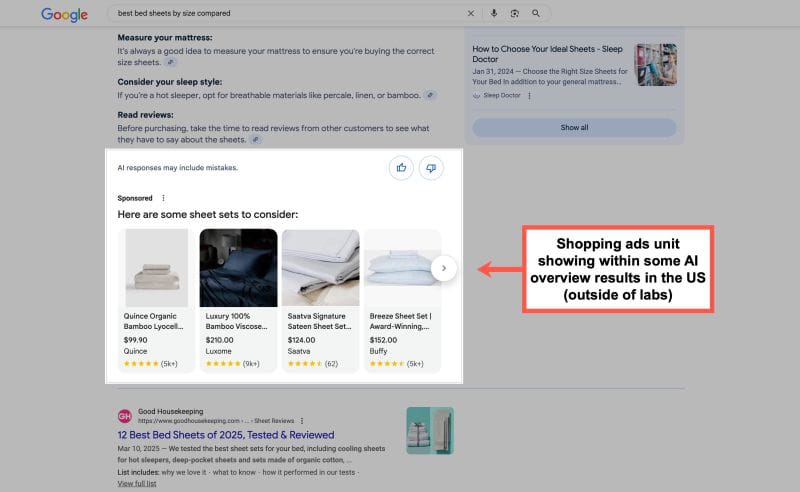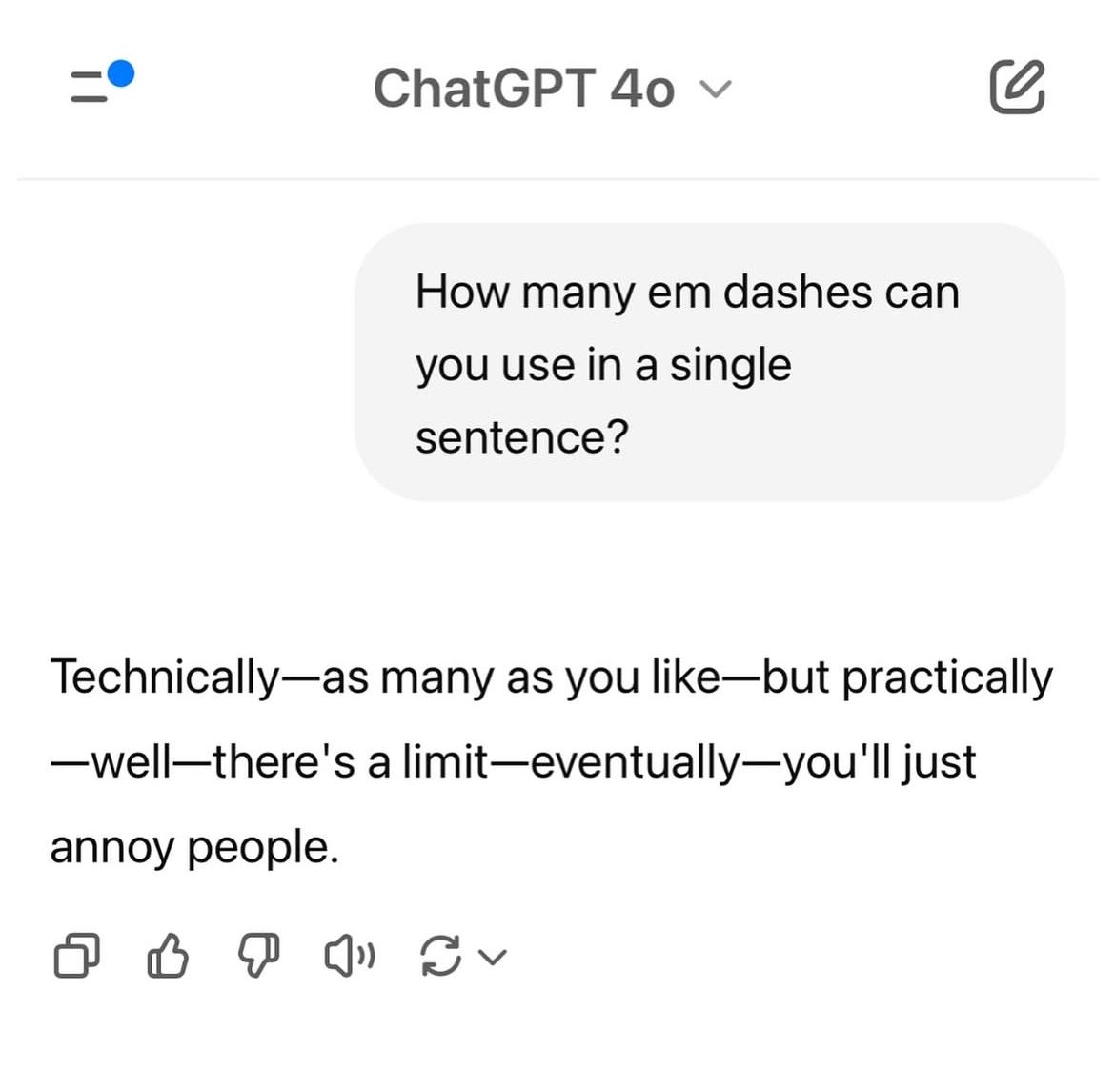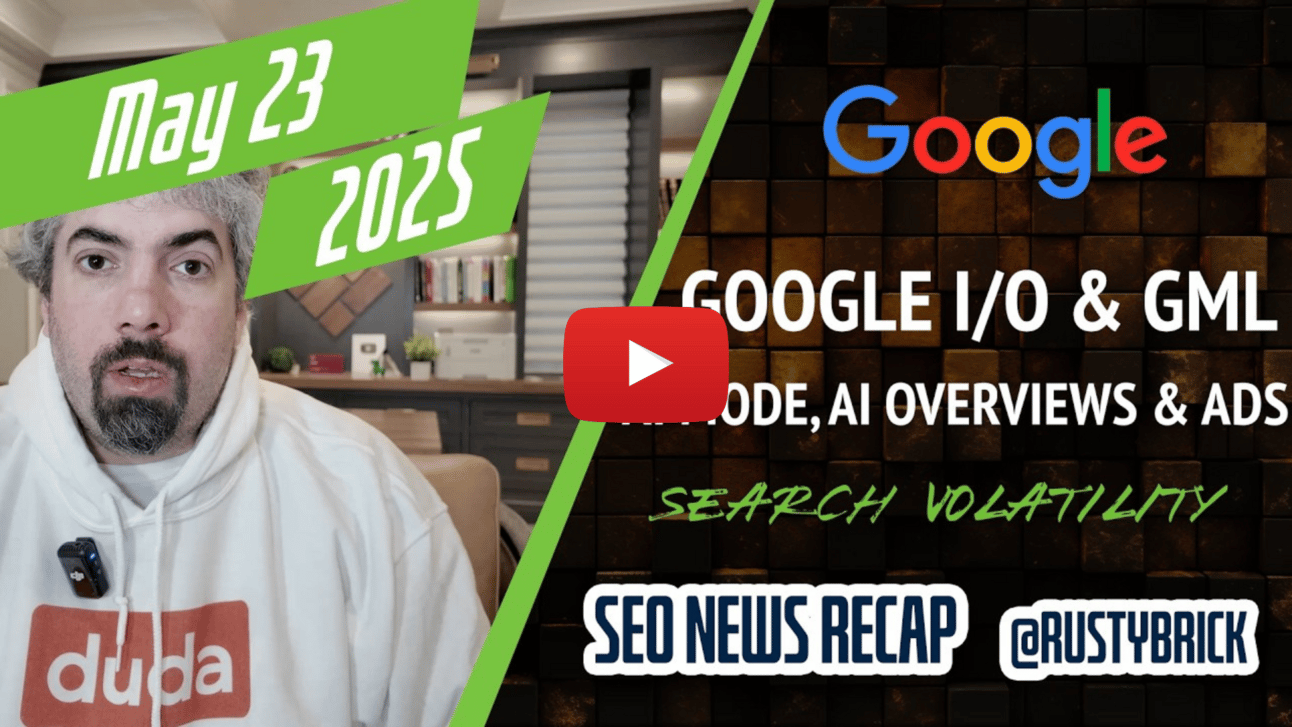
Today, we’re bringing you the latest in AI-powered marketing and business strategies. Here’s what’s inside:
🚨 AI Top Story: Google’s testing sponsored spots in its AI answers—here’s how it works.
💬 Killer Marketing prompt: Want to appear in Google’s AI results? Start with this ad strategy prompt.
🎥 YouTube Resource Of The Week: A no-fluff recap of Google’s latest AI search and ad changes.
🎯 AI Use Case Of The Week: How Booking.com uses AI to tailor prices in real time.
🌟 Creator Spotlight: Thomas Eccel breaks down how Google’s AI Overviews are changing clicks, user behaviour, and what that means for your SEO and Ads strategy.

Google’s AI Overviews Now Include Sponsored Content
No Control, No Data—Just New Ad Real Estate

It’s finally happened. Google has started blending ads into its AI-generated search summaries, known as AI Overviews. If you’ve noticed those helpful little blurbs answering your search questions right at the top—some of them now come with a Sponsored twist.
Google is testing ad placements within its new "AI Mode," a conversational search experience powered by its Gemini AI model. These ads may appear below or integrated into the AI-generated responses, offering users relevant product or service suggestions based on their queries.
What’s interesting is that advertisers don’t have to do anything new to appear here yet. These AI-generated placements are currently pulled from existing Search, Shopping, and Performance Max campaigns that use broad match keywords. That means if your campaigns are already up and running, you could show up in these new spots automatically. On the flip side, there’s still no way to target these placements specifically, and Google hasn’t broken out separate performance data for them, which makes it tricky to measure how they’re doing.
Google’s leaning into AI-first search, and it’s bringing advertisers along for the ride. As more users rely on summaries and conversations over scrolling through traditional links, showing up inside those AI-driven experiences could be a major win for visibility.
If you’re running Google Ads, now’s a great time to double-check your campaigns, especially anything using broad match. These early placements might be just the beginning—and being AI-ready now could pay off big later.

📉 AI Stocks Face 'Show Me' Moment. Will OpenAI Consumer Devices Pressure Apple? - Investors want proof AI stocks can deliver—especially with OpenAI eyeing Apple’s turf.
🛍️ Shopify Launches AI-Powered Store Builder and New Merchant Tools - Shopify’s latest AI tools automate everything from storefront design to product descriptions, making setup nearly plug-and-play.
🧩 OpenAI Updates Responses API with Remote MCP, Image Generation, and Code Interpreter Support - Developers can now build richer AI experiences with new API tools for visual content, code execution, and system-level integration.
💬 SMS now a core part of marketing, with AI driving the use case - SMS is back, and AI’s making it smarter, helping marketers send the right message at the right time.
🎯 The Artificially Intelligent Enterprise - Don’t Drift—Ride the AI Wave
💡 AI CIO - LLM-Based Code Validation for DevOps

Claude 4 by Anthropic: AI That’s Fluent, Fast, and Fact-Aware
Claude 4 is the newest release from Anthropic—and it’s shaping up to be one of the most useful AI assistants we’ve tested. It’s fast, focused, and great at handling messy, real-world work like summarising research, writing reports, or picking through long strategy docs without getting lost.
It also holds more context than most (up to 200K tokens), so you can drop in entire transcripts or multi-page docs without breaking it.
Why We Like It
200K token context window – easily handles long docs, transcripts, and multi-step instructions
Strong at reasoning and analysis – great for research, briefs, or comparing sources
Clean, reliable writing – produces well-structured, on-brand content with less tweaking
Fast and responsive – snappy even with large or complex prompts
More steerable – feels aligned, less prone to hallucinations, and stays focused on the task
Claude 4.0 includes web browsing – useful for pulling in real-time info (Pro plan only)
Pricing
Claude 4 is available via the Claude Pro plan on claude.ai, priced at $20/month.
Free users can still access Claude 3.5, but Claude 4 (Opus) is Pro-only.

Booking.com Uses AI to Personalise Pricing at Scale

The Overview
Booking.com is using AI to fine-tune pricing in real time—surfacing the most relevant offers based on who’s searching, where they are, and what they care about. Whether it’s surfacing bundles for high-intent users or offering location-based discounts through chat, this approach shows how AI can turn pricing from static to strategic.
For marketers and product teams, it’s a powerful example of using machine learning to move beyond fixed pricing and toward intent-based personalization—without needing 1:1 human input.
How It Works
Booking.com blends AI across both its backend pricing engine and customer-facing chatbot experiences.
When a user engages with the site or chatbot, the system factors in real-time variables like:
Location and device type
Booking history or loyalty status
Inventory levels and seasonal trends
Competitive pricing and current demand
From there, AI can adjust what price, offer, or package is shown automatically. This helps Booking.com personalise deals for different user segments while optimising revenue and inventory behind the scenes.
The approach also includes A/B testing, where different price structures or bundles are shown to users, with results fed back into the model for continuous optimisation.
Replicate Something Similar
To emulate Booking.com's dynamic pricing approach, consider the following steps:
Centralise Pricing Data:
What it does: Creates a single source of truth for inventory, discounts, and pricing logic.
Tools: Product catalog or CMS, Airtable (lightweight), or BigQuery/PostgreSQL (for scale)
Incorporate Real-Time Variables:
What it does: Pulls in user context like location, device, loyalty level, and behaviour.
Tools: Google Tag Manager, Segment, or Snowplow; GeoIP APIs (e.g., MaxMind), browser/device detection libraries.
Develop or Train a Pricing Model:
What it does: Uses AI to adjust prices based on demand, intent, and context.
Tools: Amazon SageMaker or Google Vertex AI for ML-based dynamic pricing.
Integrate with Front-End UX:
What it does: Dynamically displays personalised prices or bundles.
Tools: Frontend frameworks: React, Vue, or Next.js
Conduct Pricing Experiments:
What it does: A/B tests different pricing strategies to find what works.
Tools: Convert.com, Optimizely, or Google Optimize (deprecated but still used); Send variant performance back to refine pricing logic or models.

THOMAS ECCEL - Get key insights on Google’s AI Overviews—how they impact clicks, user behaviour, and what it means for your SEO and Google Ads strategy.

Broad Match Setup for AI Overviews
This prompt helps you create a tailored Google Ads campaign using Broad Match keywords and increases your chances of appearing in Google’s new AI Overview ad placements. It walks you through everything from campaign structure to ad copy and landing page strategy, with space to personalise based on your business, audience, and goals.
Prompt:
I run a business in the [industry/type of business] space. We primarily [what your business does or sells], and our customers are typically [who your customers are]. Right now, we’re trying to improve [marketing, customer experience, retention, lead gen, internal workflows, etc.].
I want you to suggest a lightweight, functional web app I could build to solve a specific problem in my business — something simple enough that I could prototype it using a tool like Replit's AI agent or OpenAI’s Codex, without needing to hire a full dev team.
Be specific. Give me:
The core concept for the app
Who it’s designed for
What pain point it solves
Key features (keep it minimal and focused)
How it could look/feel (optional: match a vibe like “premium,” “playful,” “minimal,” or “B2B clean”)
A basic explanation of how the logic might work behind the scenes (so I can prompt Replit or Codex more effectively)
Optional: how to validate if users actually want it
Let’s keep it scoped small enough to build and test in a week or two. I want you to think like a lean startup founder and a marketer, not just a dev.
A recap of Google’s latest updates, from AI search changes to ad tools

Writing like a human? Easy. Just throw in an em dash—or twelve…








